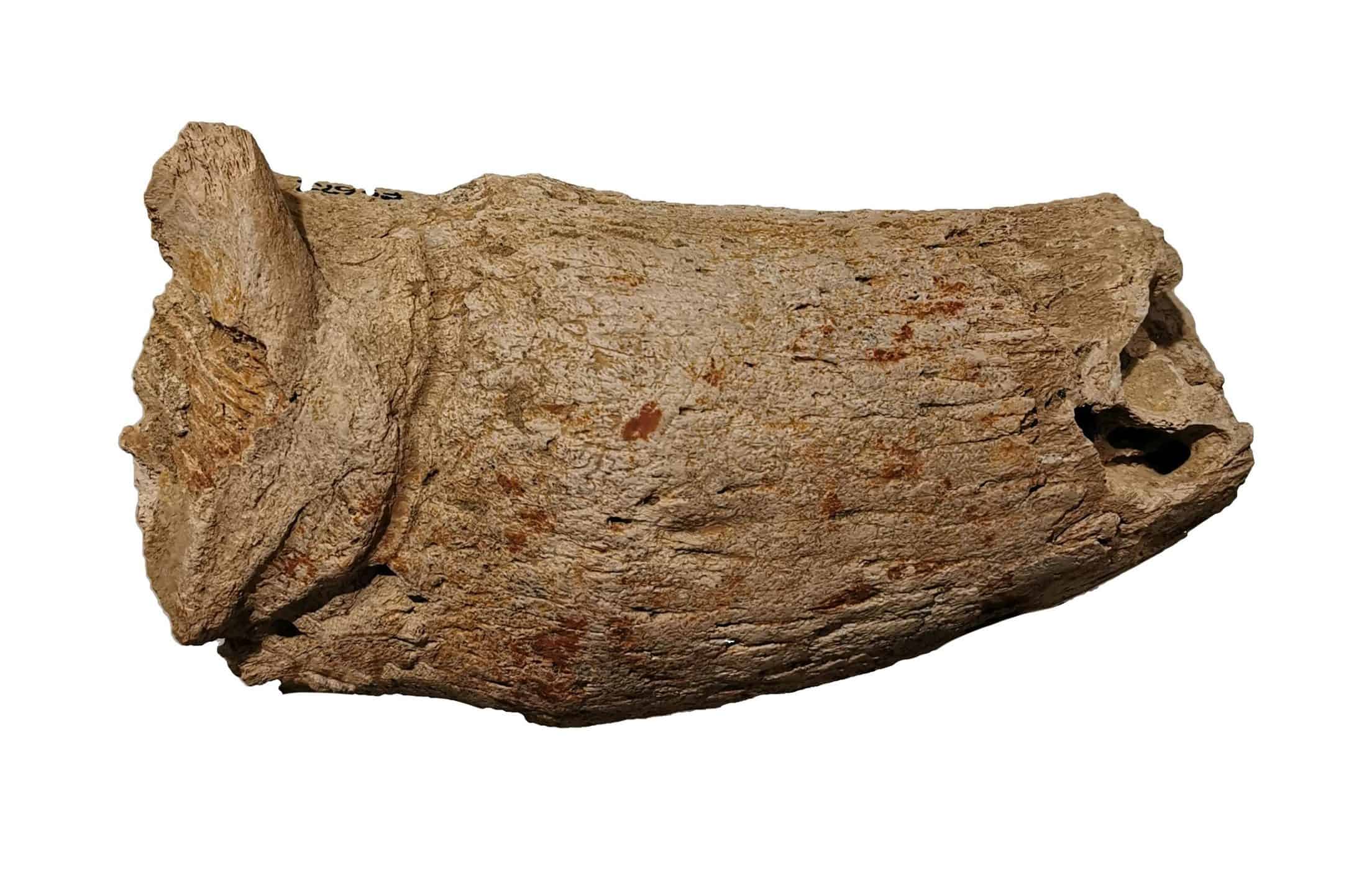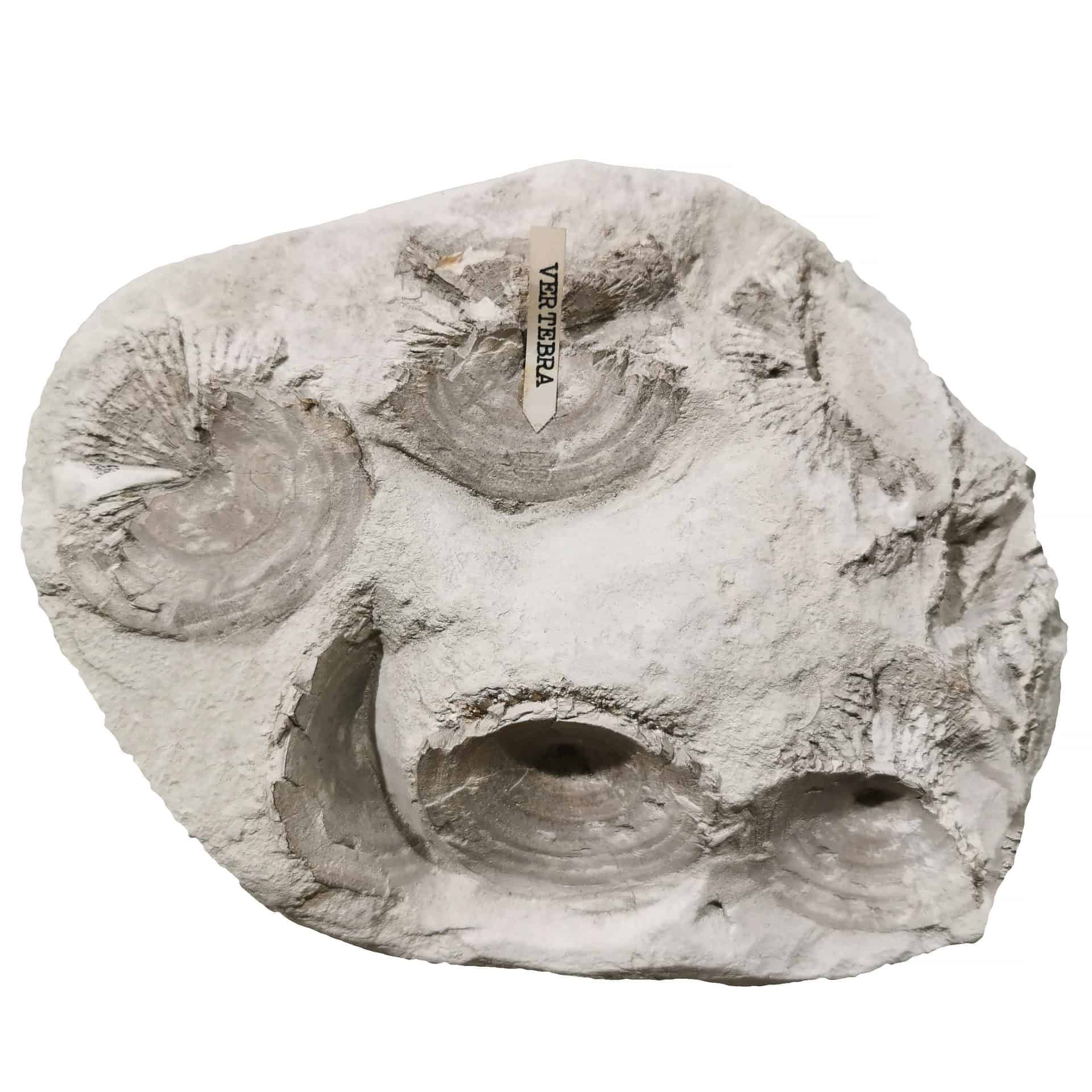The tooth of a straight-tusked elephant. . Warm periods in between the Ice Ages saw animals such as hippos and elephants living in Kent.
Object: Rocks and Fossils
Hippo femur
The femur of a hippo. Warm periods in between the Ice Ages saw animals such as hippos and elephants living in Kent.
Rhino tooth
Found in Hyles Brickearth pit, Hyles Road, Folkestone. Discovered 18 feet below the surface. A molar and incisor were found.
Fossil shark vertebrae
Fossil vertebrae from the backbone of a prehistoric shark. It lived in the Great Chalk Sea that covered Kent in the Cretaceous, at the time of the dinosaurs.
Dinosaur footprint
The three-toed footprint of a dinosaur, discovered on the beach at East Wear Bay, Folkestone in 2017 by local collector and fossil hunter Steve Friedrich. It’s believed to be that of a theropod – a group of dinosaurs that includes Tyrannosaurus Rex – though this one was quite a bit smaller. The footprint is about 120 million years old.
Mammoth tooth
The tooth of a woolly mammoth. During the last 2.5 million years Ice Ages carved out the landscape of the Folkestone area. About 40,000 years ago mammoths and other Ice Age animals lived here and Britain was joined by a land bridge to France.
Iguanodon dinosaur thigh bone
Part of the thigh bone (femur) of a large plant-eating dinosaur called Iguanodon, which lived 120 to 140 million years ago. Large specimens grew up to 2.7 metres tall and were 11 metres long. Iguanodon got its name because its teeth were similar in shape to those of a modern-day iguana. It was one of the first dinosaurs to be discovered and scientifically described, by Gideon Mantell (1790-1852). This fossil was found in the Wealden Clay near Ashford.
Icthyosaur jaw and teeth
Part of a jawbone and teeth of an ichthyosaur. These huge sea reptiles lived over 100 million years ago when warm seas covered the land. They hunted fish which they caught in their cone-shaped teeth. The largest could grow up to 16 metres. This fossil was discovered in the area around Lyme Regis and eventually end up in Folkestone Museum, as an example of what swam off Folkestone’s shores millions of years ago.
Folkestone fossil pudding
John Griffiths was a Victorian fossil dealer, who was involved in the setting up of Folkestone’s first museum. He came up with the idea of sticking lots of tiny ammonites (and other fossil shells) in cement to make a ‘fossil pudding.’ He sold these as seaside souvenirs.
Fossil fish Pachyrhizodus salmoneus
The hed and front part of a fossil fish that swam in the prehistoric seas where Folkestone is today. It looked a bit like a salmon which is reflected in its Latin name Pachyrhizodus salmoneus.
Ammonite bitten by a fish
This ammonite’s been bitten by a fish or a tiny shark. Can you spot the bite mark? Ammonites were shellfish that fed on plankton. They floated up and down in the warm sea that covered this area in prehistoric times. They became extinct 65 million years ago at the same time as the dinosaurs. Their closest modern relatives are octopus and squid.
Fossil shark tooth
The fossil tooth of a prehistoric shark that lived in the seas that covered Kent in the Cretaceous period.














